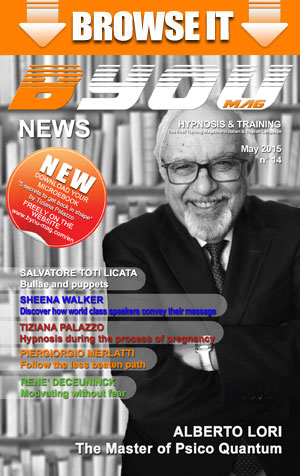Assertive comunication 2 by Piergiorgio Merlatti
27 Jul, 2014
 Last month we began to discover the Assertive communication, further today we explore the topic. In opposite to the Assertive communication there are two other types of communication: one passive communication and one aggressive type that we often encounter in communicating with others, but how can you recognize them?
Last month we began to discover the Assertive communication, further today we explore the topic. In opposite to the Assertive communication there are two other types of communication: one passive communication and one aggressive type that we often encounter in communicating with others, but how can you recognize them?
The good news is that it is fairly easy to recognize them,let’s analize the communication of the passive type: The subject with a style of passive communication, is generally a person who acts as the sole aim to please everyone, can not say no, put aside his own needs to meet exclusively those of others, often suffers situations passively, in other words, is a succubus. This leads him to have a high social anxiety that puts him in a position to be easily influenced and manipulated by third parties. Fails to adequately express his needs and his own needs, being concentrated on those of others.
In the short term this behavior seems to reduce the anxiety, but in fact limits the individual in his own capacity for action. Often at the root of this style of communication there is a strong anxiety-provoking charge, mainly dictated by feelings of guilt, combined with a low self-esteem. The goals taht he want to pursue unconsciously, with this kind of attitude, is the kindness of others and avoid any kind of conflict. In the case of subjects with a style of Aggressive communication, however, the tendency is the will to impose, He want to dominate.
Their goal is to establish themselves, in order to achieve success and personal and social power, often through the use of coercive instruments and destructive ones too. These are people who do not respect the opinions and spaces of others. Deeply self-centered, focused only on their needs, for them what counts is only their own desires. They tend to be prevaricators, this kind of behavior is dictated more by anxiety, accompanied by strong tensions that have raised up their anger and hostility. They feed an ill-concealed contempt for others and are totally indifferent to the dignity of others. Now, how many times in our life, our path has crossed people with these two communication styles? I do not know about you but I almost encounter one of them every day, and to know how to communicate in assertively style is the master key that allows me to establish successful communication processes in every situation.
OK, Bravo Piergiorgio, but how do I train myself to be assertive?
Okay … since you asked me, I give you some exercise to start training, but if you start, you have to take the commitment with yourself to be consistent and determined … Done?
OK! I can state that assertiveness is a skill that is enclosed in the deep part of all of us … it is only to bring it back to the surface and the exercises suggested here are heading you in this direction. The first exercise is called “the reflection” and here I want to emphasize at once, the difference between seeing and observing and between hearing and listening … all we see and hear, but the difference between an ordinary person and a good communicator is all here: the communicator don’t see but observe and doesn’t hear, but listen. Start your practice with the people around you, the world is full of unaware coaches.
Then begin to see how the other persons are dressed, how they are combed, what is the color of their eyes, watch it carefully, but discreetly, without being intrusive, and fall in love (metaphorically) of at least one their single particular. Now listen carefully to his words, be careful at what kind of words he use more often, focus on the tone and rhythm of his voice and adapt yourself to respond to these , watch his breathing and adapt yourself to it.
The second exercise is a compound exercise, the first part is about eye contact (it will be useful in the coming months for new exercises), while the second concerns the proxemics. Get used to look for eye contact (look in the eye) with the person or people in front of you, if you are in the presence of multi-party, get used to moving with a certain frequency your gaze from one to another, it is more than that a provision of good education, it is an effective method to throw what I call the “bridge of communication”, make sure that your blush is not persistent and seemingly indiscreet, but genuinely interested in what you are listening, remember also to nod your head every now and then or to give a nod that you are following what you are saying.
Everybody of us has around himself what it is for him the “living space”, and this varies in strength of social relationships that we have with our interlocutors, proxemics is the science that studies these relationships. A universally recognized coding is what sets the following parameters identified by the anthropologist Edward T. Hall in 1963 The intimate distance (0-45 cm). The personal distance (45-120 cm) for the interaction between friends.
The social distance (1.2 to 3.5 meters) for communication between acquaintances or teacher ratio allievo. La-distance public (over 3.5 meters) for public relations. Look carefully at what are the reactions when you invade a personal life space of a person just met and then write it down on a notebook, have fun (within the limits of decency, modesty and the law) playing with proxemics and stored the reactions of your contacts, knowing “where to stay” while you talk is one more arrow in your bow. See you next month with new exercises and new strategies … by the way, enjoy a well earned rest and Happy Holidays!
Piergiorgio Merlatti
http://www.phoenixprojectllc.com
Related Posts
-

THE RECIPE BY LUIGI PERO Fillet of Palmito in couscous
-

Luigi Pero Art in the Kitchen
-

THATconnect MUSIC July by Clinton Bishop
-

Instrumental Music and Songs by Tal Babitzky
-

Reuse and visions of transience by Valentina Iannazzone
-

The Order in the Suitcase By Elisa Candotti
-

Why we get sick? By Camelia Cicu
-

SINGLE BUT NOT ALONE by Antonietta Paglia
-

Be Water, my Friend! by Tiziana Palazzo
-

Fire Your Monkey Mind! by Dana Pharant



